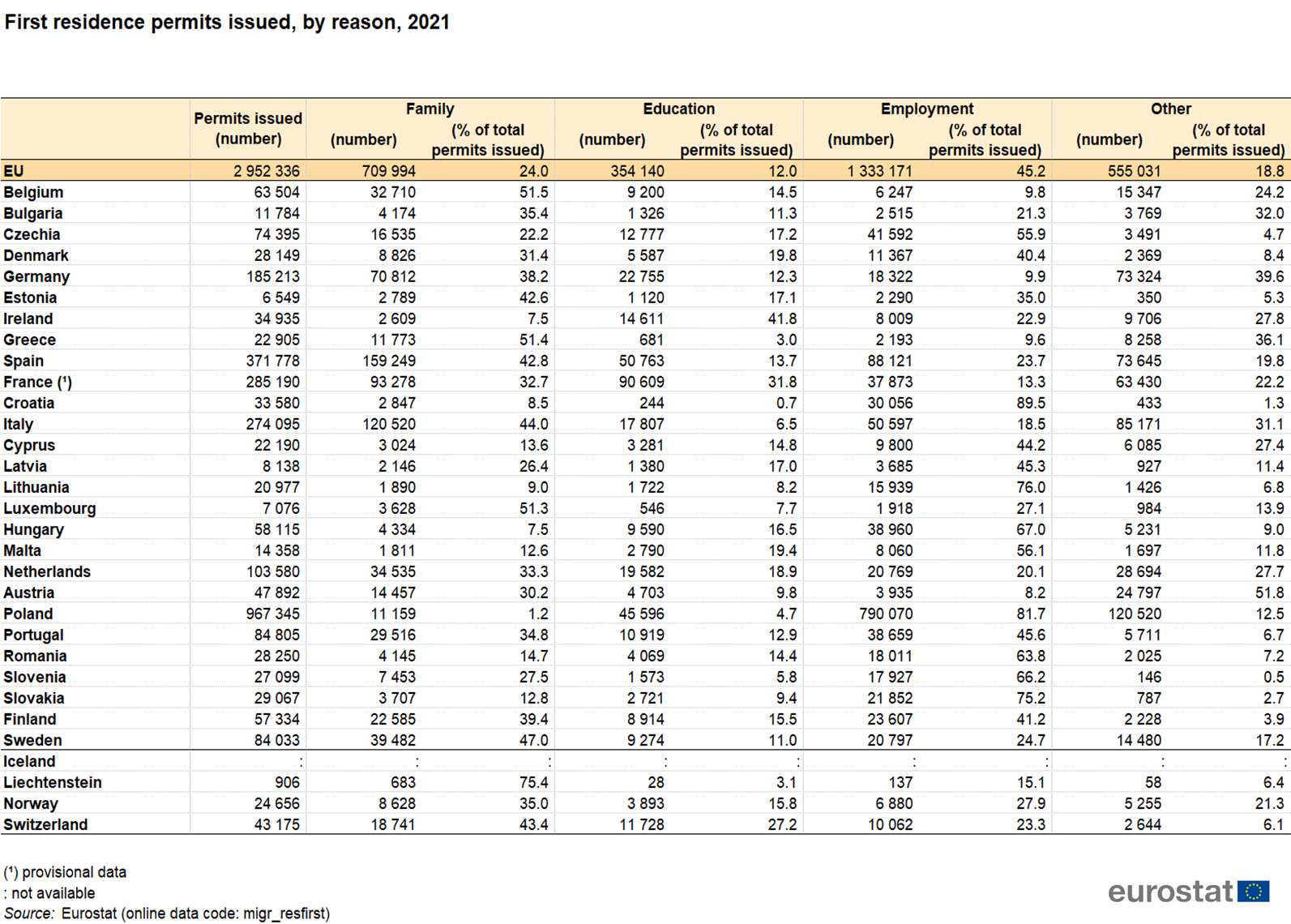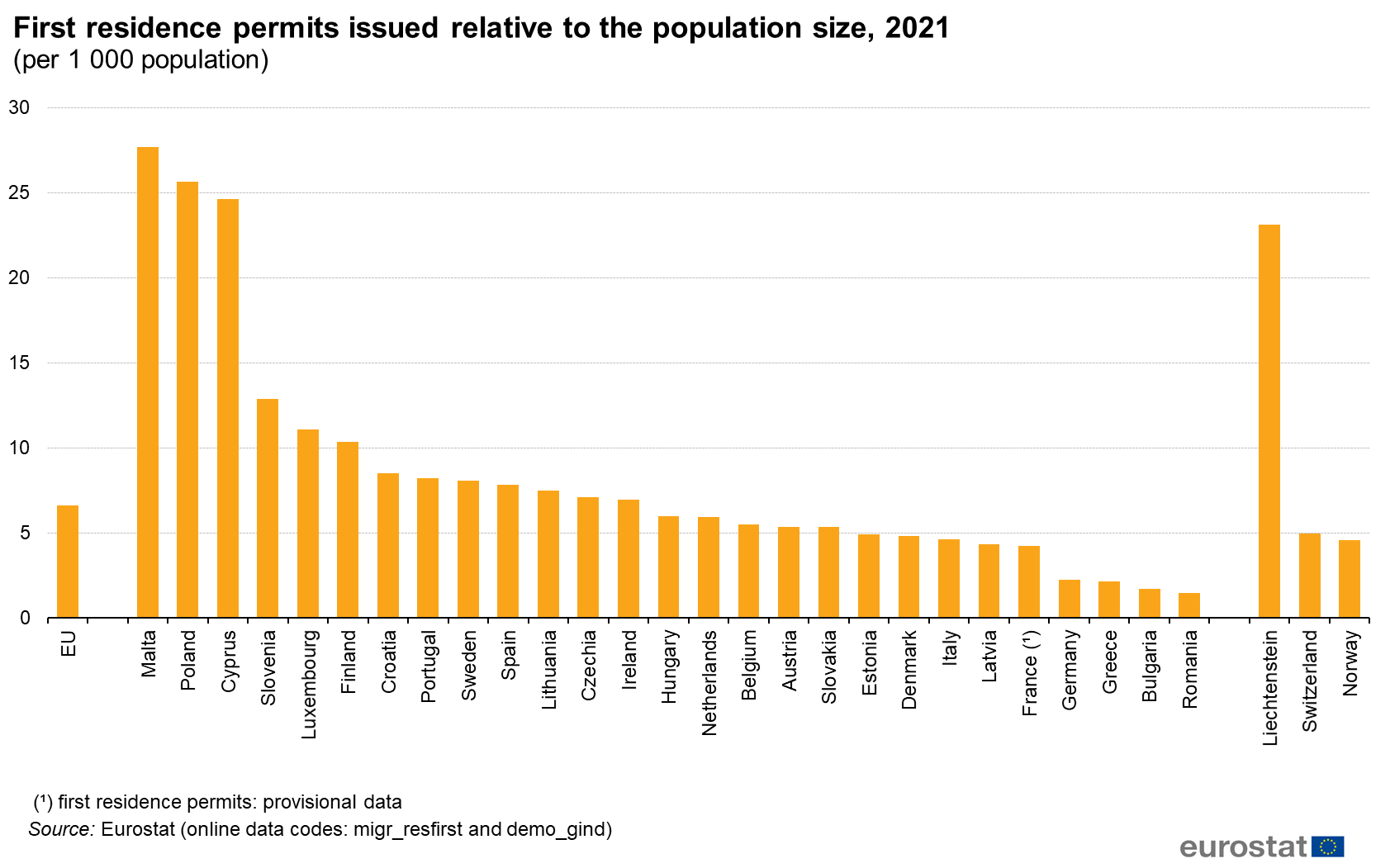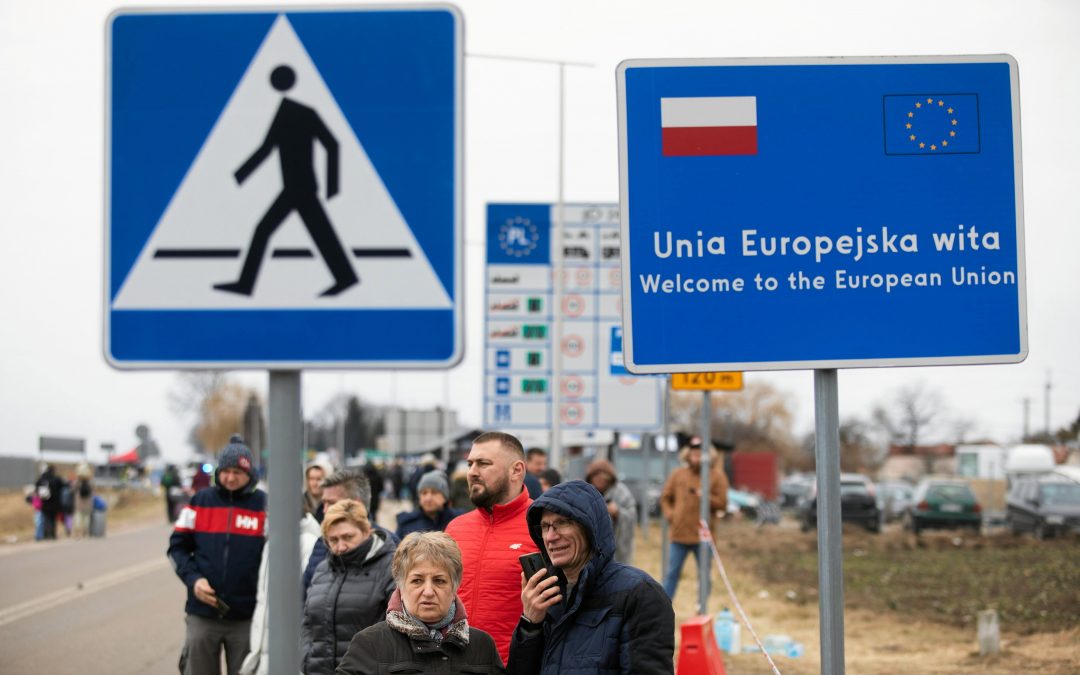Poland issued almost one million first residence permits to immigrants from outside the European Union last year, more than any other EU member state. It is the fifth year in a row that Poland has topped the list, amid a wave of immigration unprecedented in the country’s history.
The data, released by Eurostat, the EU’s statistics agency, show that Poland issued 967,345 permits in 2021, its highest ever annual figure. That was one third of all permits issued in the EU and more than twice as many as any other member state.
The next highest numbers were recorded by Spain (371,778), France (285,190) and Germany (185,213). Relative to population, Poland issued the second most permits (25.6 per 1,000 population), behind only the small island state of Malta (27.7) and just ahead of another, Cyprus (24.6).

Eurostat notes that last year saw residence permit numbers return to pre-pandemic levels, with 2,952,300 issued across the bloc, 31% more than in 2020 and only narrowly less than the 2,955,300 recorded in 2019.
Poland itself saw a 62% rise in the number of permits issued last year compared to 2020, when its figure stood at just under 600,000. Before 2021, the country’s highest annual figure was almost 725,000 in 2019.

In every year, since 2017, Poland has issued more first residence permits than any other member state, and in the three years before that it was second only to the United Kingdom, which has since left the EU.
As in previous years, Poland’s statistics regarding the reason for issuing permits in 2021 differed from other high-immigration countries: 82% were for employment, compared to figures of 24% in Spain, 13% in France and 10% in Germany. Those latter countries more often gave permits for family or educational reasons.
Likewise, as in the past, the vast majority of Poland’s permits – 75.5% – issued in 2021 went to citizens of Ukraine, followed by Belarus (13.5%), Russia (2.4%), Turkey (1%) and India (0.8%).
Ukrainians have long been Poland’s largest immigrant group, and their numbers have grown particularly rapidly since Russia’s previous aggression in 2014. This year (after the period covered by the Eurostat data), millions more Ukrainians crossed into Poland fleeing the war. Over one million are estimated to currently remain as refugees.
The number of Belarusians arriving has also accelerated since 2020, when Alexander Lukashenko’s regime in Minsk began a clampdown following protests against his proclaimed re-election victory amid widespread evidence of vote-rigging.
At the end of 2019, Poland’s statistical office, GUS, estimated there were two million foreigners living in Poland, making up around 5% of the population. That figure is likely to have increased significantly since then amid further mass immigration.
Main image credit: Jakub Orzechowski / Agencja Wyborcza.pl

Daniel Tilles is editor-in-chief of Notes from Poland. He has written on Polish affairs for a wide range of publications, including Foreign Policy, POLITICO Europe, EUobserver and Dziennik Gazeta Prawna.




















